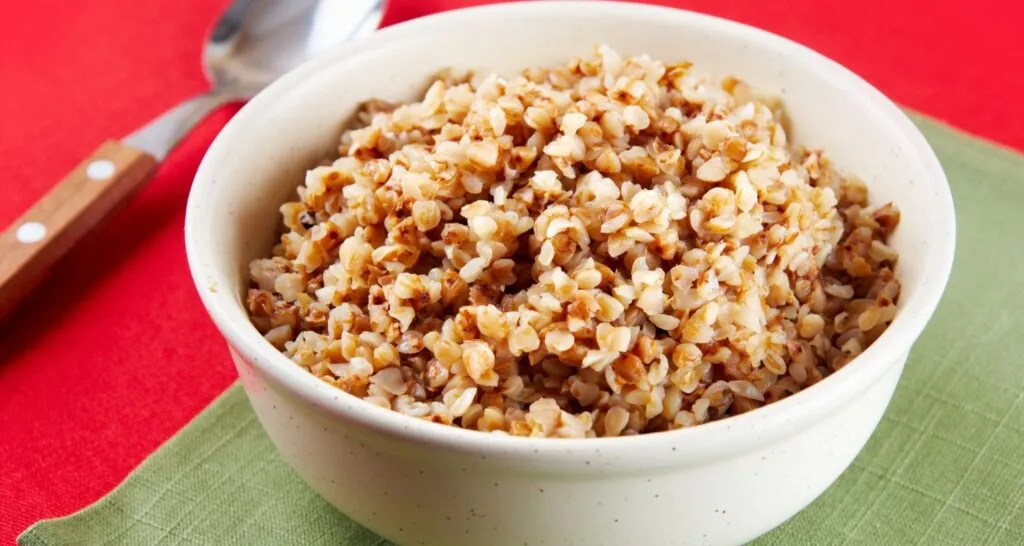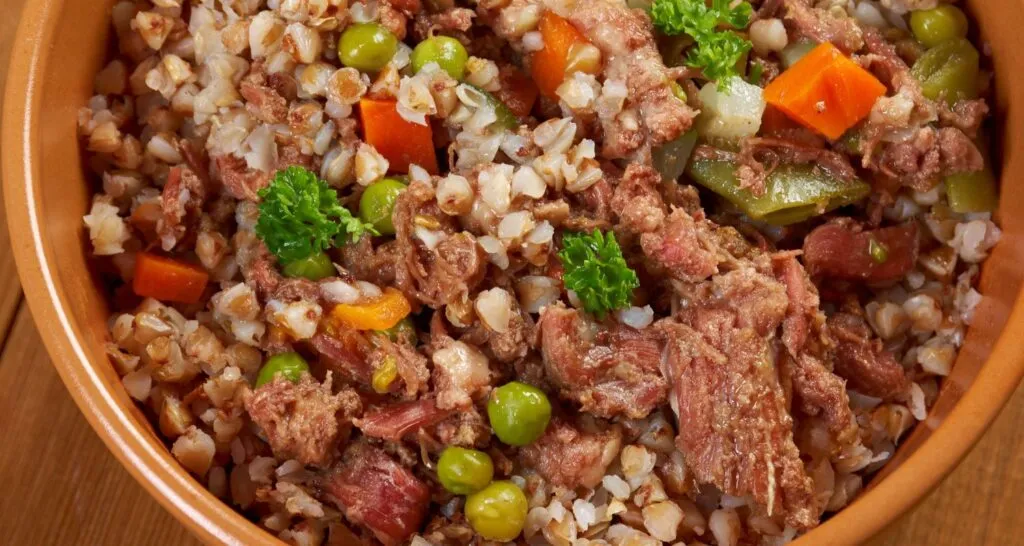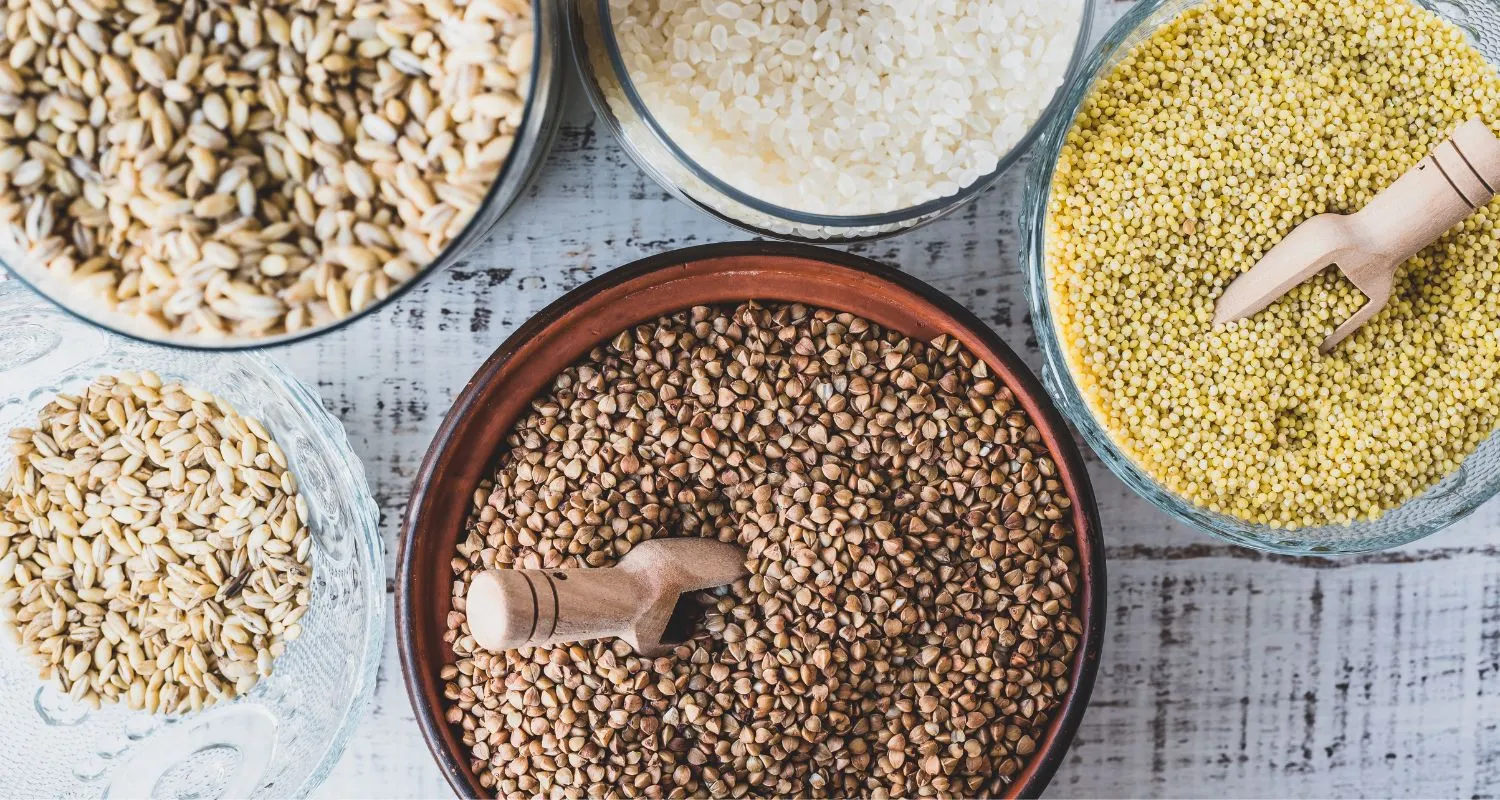In the quest for a healthier lifestyle, many of us are constantly on the lookout for food options that cater to our dietary needs without compromising on taste or nutritional value. Enter buckwheat, a powerhouse grain that’s been gaining popularity not just for its rich nutrient profile but also for its gluten-free status. This article delves deep into the world of buckwheat, exploring everything from its nutritional benefits to how it fits into a gluten-free diet. Whether you’re a seasoned gluten-free eater or just curious about healthier grain alternatives, buckle up for an enlightening journey into buckwheat’s versatile and nutritious world.
Introduction to Buckwheat
Buckwheat, often mistaken as a cereal grain, actually belongs to the family of rhubarb and sorrel, making it a pseudo-cereal. Unlike its name suggests, buckwheat is completely free of wheat and gluten, offering a fantastic alternative for those following a gluten-free diet. This tiny, yet mighty seed, known as kasha when roasted, offers a unique, nutty flavor that enhances both sweet and savory dishes alike.
Buckwheat’s journey from a plant to your plate is quite fascinating. Grown for its grain-like seeds, it thrives in regions that other crops find challenging. Its flowers are not only beautiful but also beneficial, attracting bees that produce a dark, rich honey. When it comes to gluten-free eating, buckwheat stands out not just for what it lacks (gluten) but for the nutritional punch it packs. Rich in antioxidants, minerals, and fibers, it supports a healthy diet in more ways than one.
For those exploring gluten-free living, understanding the true nature of buckwheat is crucial. Despite its misleading name, buckwheat offers a safe haven for anyone looking to avoid gluten without sacrificing flavor or nutrition. As we dive deeper into buckwheat’s profile and benefits, it becomes clear why this ancient grain deserves a spot in your pantry. For a more in-depth look into the gluten-free lifestyle and managing celiac disease, exploring resources like Beyond Celiac can offer valuable insights and support.
Stay tuned as we explore the nutritional benefits of buckwheat in the next section, shedding light on why this gluten-free grain is a must-try for health enthusiasts and those with dietary restrictions alike.
Buckwheat’s Nutritional Profile and Health Benefits
Buckwheat truly stands out in the realm of grains, offering a wealth of nutrients and health benefits that cater to a wide audience, especially those on a gluten-free diet. Rich in antioxidants, dietary fibers, and essential minerals, buckwheat supports a healthy lifestyle in numerous ways.
Understanding Buckwheat’s Nutritional Value
First off, buckwheat is a powerhouse of essential nutrients. It’s packed with high-quality protein, containing all nine essential amino acids, making it a rare find in the plant world. Moreover, it’s rich in magnesium, potassium, and fiber, contributing to heart health and improved digestion. Buckwheat also contains a significant amount of B vitamins, which play a vital role in energy metabolism and brain health.
But that’s not all. Buckwheat is also low in calories yet high in dietary fiber, making it an excellent choice for those looking to maintain or lose weight. Its high fiber content ensures you feel fuller for longer, helping to curb cravings and overeating.

Health Benefits of Buckwheat
The health benefits of buckwheat are as impressive as its nutritional profile. One of the standout benefits is its positive impact on heart health. Thanks to its high magnesium content, buckwheat can help lower blood pressure and reduce the risk of heart disease. Its fiber content also aids in lowering bad cholesterol levels, further protecting the heart.
For those managing blood sugar levels, buckwheat is a boon. The complex carbohydrates found in buckwheat are digested slowly, providing a steady release of energy without causing spikes in blood sugar. This makes it an ideal choice for individuals with diabetes or those looking to prevent it.
Buckwheat’s high antioxidant content, particularly rutin, contributes to its health benefits. Rutin is known for its anti-inflammatory properties, helping to prevent damage from free radicals and reduce the risk of chronic diseases.
Incorporating buckwheat into your diet isn’t just about avoiding gluten; it’s about embracing a food that offers substantial health benefits. From supporting heart health to managing blood sugar levels and aiding in weight management, buckwheat proves to be a versatile and nutritious choice for anyone looking to improve their overall well-being.
For a deeper dive into managing a gluten-free lifestyle and its benefits beyond buckwheat, resources like National Celiac Association provide invaluable guidance and information.
As we’ve seen, buckwheat isn’t just a gluten-free alternative; it’s a nutritional goldmine. In the next part, we’ll explore how to incorporate buckwheat into a gluten-free diet effectively, ensuring you reap all the benefits this amazing grain has to offer.
Buckwheat in a Gluten-Free Diet
Buckwheat, with its versatile nature and rich nutritional profile, finds a special place in the gluten-free diet. Its inclusion not only diversifies the diet but also brings along numerous health benefits without the risk of gluten contamination, provided it’s handled correctly.
Incorporating Buckwheat into a Gluten-Free Diet
Embracing buckwheat in a gluten-free lifestyle opens up a plethora of culinary opportunities. From breakfast to dinner, buckwheat can be the star of the show. Begin your day with buckwheat pancakes or porridge, offering a hearty and nutritious start. For lunch or dinner, buckwheat groats can replace rice or quinoa as a side dish, bringing a unique flavor and texture to your plate. Buckwheat flour also makes for excellent baking, from bread to cookies, providing a gluten-free option that doesn’t compromise on taste or texture.
However, it’s crucial to ensure that the buckwheat you’re using is truly gluten-free. Cross-contamination can occur during processing, so always look for products that are certified gluten-free. This certification guarantees that the product has been tested and contains less than 20 parts per million (ppm) of gluten, the threshold for gluten-free labeling.
Potential Risks and Considerations
Buckwheat, inherently without gluten, faces the issue of cross-contamination. Ensuring its safety involves selecting products and buckwheat from trusted sources committed to gluten-free practices. This vigilance is crucial, extending to restaurant dining where clear communication of dietary needs is vital for maintaining a gluten-free regimen.
Awareness of buckwheat allergies is also important. Though uncommon, initiating buckwheat in small amounts and observing any bodily reactions is advisable for newcomers.
Buckwheat’s adaptability in the kitchen invites a realm of culinary creativity, presenting a fulfilling option beyond traditional grains containing gluten. It stands as an appealing choice for those enhancing their diet or exploring new grains.
For individuals navigating a gluten-free lifestyle, or seeking additional insights, the Whole Grains Council provides extensive information on buckwheat and similar grains, aiding in informed and nutritious dietary decisions.
Through our discussion on the inclusion of buckwheat in diets free from gluten, we’ve seen its potential to significantly enrich dietary variety and nutritional value. The following section will further examine buckwheat’s culinary potential, highlighting its flexibility in recipes and tips for maximizing its benefits as a grain free from gluten.
Culinary Uses of Buckwheat
Buckwheat’s versatility in the kitchen makes it a prized ingredient in a gluten-free diet. Its unique flavor and nutritional profile offer endless possibilities, from traditional dishes to innovative culinary creations.
Culinary Applications of Buckwheat
Buckwheat Groats: The whole kernels of buckwheat, known as groats, serve as a fantastic rice alternative. They can be boiled and added to salads, soups, or served as a side dish. Groats offer a slightly nutty flavor and a chewy texture, enriching any meal with its presence.
Buckwheat Flour: Ground buckwheat yields a gluten-free flour that’s perfect for baking. This flour can replace traditional wheat flour in pancakes, bread, and noodles, providing a rich, earthy flavor and a tender texture. Buckwheat flour is especially popular in making traditional Russian blinis, Japanese soba noodles, and French galettes.
Kasha: Toasted buckwheat groats, or kasha, offer a more intense flavor profile. Kasha works beautifully in pilafs or as a filling for stuffed peppers or cabbage rolls. Its robust taste pairs well with hearty vegetables and meats, making it a winter favorite.
Recipe Ideas and Alternatives to Common Wheat-Based Dishes
Buckwheat Pancakes: Start your day with a stack of fluffy buckwheat pancakes. Top them with fresh berries and a drizzle of honey for a nutritious breakfast that doesn’t skimp on flavor.
Buckwheat Soba Noodles: For a quick and healthy meal, toss cooked buckwheat soba noodles with stir-fried vegetables and a soy-based sauce. This dish not only satisfies your Asian cuisine cravings but also keeps your diet well within gluten-free boundaries.
Buckwheat Salad: Mix cooked buckwheat groats with chopped vegetables, a handful of greens, and a tangy dressing for a refreshing and filling salad. Add some grilled chicken or tofu for an extra protein boost.
The beauty of buckwheat lies in its ability to be a chameleon in the kitchen. Whether you’re looking to recreate a favorite dish gluten-free or experiment with new recipes, buckwheat provides a nutritious and delicious base to build upon.
Embracing buckwheat in your gluten-free culinary adventures not only diversifies your diet but also introduces you to a world of flavors and textures that enhance your meals. As we continue to explore the benefits and versatility of buckwheat, remember that its inclusion in your diet is limited only by your creativity.
In the next section, we’ll delve into ensuring your buckwheat is genuinely gluten-free, addressing concerns about cross-contamination and offering tips for selecting safe buckwheat products. Stay tuned to discover how to confidently incorporate buckwheat into your gluten-free lifestyle, ensuring every meal is both delicious and safe.
How to Ensure Buckwheat is Truly Gluten-Free
Ensuring that buckwheat is truly gluten-free is crucial for those with celiac disease or gluten sensitivity. Despite its natural absence of gluten, cross-contamination can occur, posing risks to those on a strict gluten-free diet. Here, we’ll explore steps to verify the gluten-free status of buckwheat and recommend practices for safe consumption.
Verifying Gluten-Free Status
Look for Certifications: The most straightforward way to ensure buckwheat is gluten-free is to check for certifications from recognized organizations. Products certified by the Gluten-Free Certification Organization (GFCO) undergo rigorous testing to ensure they contain less than 10 parts per million (ppm) of gluten, which is stricter than the FDA’s requirement of less than 20 ppm for gluten-free labeling.
Read Labels Carefully: Always read product labels for any mention of gluten or gluten-containing ingredients. Beware of phrases like “processed in a facility that also processes wheat,” as they indicate a higher risk of cross-contamination.
Contact Manufacturers: If in doubt, reach out to the manufacturer directly. Inquire about their processing practices and whether they test their products for gluten. A reputable company should be transparent about their protocols to ensure gluten-free status.
Tips for Avoiding Cross-Contamination
Separate Utensils and Appliances: In your kitchen, dedicate certain utensils and appliances solely to gluten-free cooking. This practice minimizes the risk of cross-contamination from gluten-containing foods.
Cook Buckwheat Properly: When preparing buckwheat at home, ensure it’s cooked in clean pots and with fresh water to avoid any gluten residue from previous meals.
Educate Yourself and Others: Awareness is key. Educate yourself about gluten-free practices and share this knowledge with friends and family who might cook for you. The more they understand, the safer your eating experiences will be.

Recognized Gluten-Free Certifications to Look For
To confidently enjoy buckwheat in your gluten-free diet, familiarize yourself with the logos of recognized gluten-free certifications. Besides the GFCO, other reputable certifications include the National Celiac Association (NCA) and the Celiac Support Association (CSA). These certifications provide an extra layer of assurance, making it easier for consumers to make safe choices.
Embracing buckwheat as part of your gluten-free lifestyle offers a world of nutritional benefits and culinary diversity. By taking proactive steps to ensure its gluten-free status, you can enjoy this versatile grain without worry. Stay informed, remain vigilant about cross-contamination, and always opt for certified gluten-free products when possible.
In our journey through the world of buckwheat, we’ve explored its nutritional benefits, culinary uses, and how to safely incorporate it into a gluten-free diet. As we continue to navigate gluten-free living, remember that knowledge and caution are your best tools for a healthy, fulfilling diet. Stay tuned for more insights and tips in our upcoming sections, designed to empower your gluten-free lifestyle.
FAQs
Navigating a gluten-free diet can be challenging, especially when incorporating grains like buckwheat. To help clear up common concerns, we’ve compiled a list of frequently asked questions about buckwheat and its place in a gluten-free lifestyle.
Is Buckwheat Always Gluten-Free?
While buckwheat itself is naturally gluten-free, cross-contamination during processing can introduce gluten. Always opt for buckwheat products labeled or certified as gluten-free to ensure safety.
Can Buckwheat Cause Allergic Reactions?
Yes, though buckwheat allergies are less common than wheat allergies, they do occur. Symptoms can range from mild to severe. If you experience any allergic reactions after consuming buckwheat, consult a healthcare provider.
How Can I Introduce Buckwheat Into My Gluten-Free Diet?
Start by incorporating small amounts of buckwheat into your meals. Try using buckwheat flour in your baking or adding cooked groats to salads and side dishes. Experimenting with different recipes can help you find the best ways to enjoy buckwheat.
What Are Some Gluten-Free Alternatives to Buckwheat?
If you’re looking for variety or can’t consume buckwheat, other gluten-free grains include quinoa, millet, and amaranth. These grains also offer nutritional benefits and can be used in a wide range of dishes.
How Do I Ensure Buckwheat Products Are Truly Gluten-Free?
Look for products with a gluten-free certification from reputable organizations. Reading labels carefully and contacting manufacturers for information on their processing practices can also help ensure the products you choose are safe for a gluten-free diet.
Is buckwheat gluten free?
Yes, buckwheat is indeed gluten-free. Despite its name, buckwheat is not related to wheat and is safe for those with celiac disease or gluten sensitivity.
Is buckwheat a grain or wheat?
Buckwheat is not a grain or wheat; it’s actually a seed that is related to rhubarb and sorrel. Making it a great alternative for those looking for gluten-free options.
Can I eat buckwheat if I am wheat intolerant?
Absolutely, if you are wheat intolerant, buckwheat is a safe choice since it does not contain gluten and is not related to wheat.
Which is better buckwheat or quinoa?
Choosing between buckwheat and quinoa depends on personal preference and nutritional needs. Both are gluten-free and packed with nutrients, but quinoa has a higher protein content, whereas buckwheat is richer in dietary fiber.
Is buckwheat better than oatmeal?
Both buckwheat and oatmeal offer health benefits. Buckwheat is a good source of antioxidants and is gluten-free, while oatmeal is known for its heart-healthy soluble fiber. Ultimately, the choice depends on dietary needs and preferences.
What are 6 grains that are gluten-free?
Aside from buckwheat, other gluten-free grains include quinoa, millet, amaranth, sorghum, and teff. These grains offer a variety of nutritional benefits and are safe for those on a gluten-free diet.
Does buckwheat count as wheat?
No, buckwheat does not count as wheat. Despite the misleading name, buckwheat is not related to wheat and is completely gluten-free.
Is buckwheat better for you than wheat?
Buckwheat may be a better option for those with gluten intolerance or celiac disease since it is gluten-free. Nutritionally, it also offers a good source of antioxidants and dietary fiber.
Can you eat buckwheat on a grain free diet?
Yes, you can eat buckwheat on a grain-free diet. Although often considered a grain, buckwheat is actually a seed, making it suitable for grain-free diets.
Is buckwheat a healthy grain?
Yes, buckwheat is considered a healthy “grain.” It is rich in minerals, antioxidants, and dietary fiber, making it a beneficial addition to a balanced diet.
Addressing these FAQs can help demystify buckwheat’s role in a gluten-free diet and ensure a safe, enjoyable culinary experience. Whether you’re newly diagnosed with celiac disease, have gluten sensitivity, or simply wish to explore gluten-free grains, buckwheat offers a nutritious and versatile option. By staying informed and vigilant, you can reap the benefits of buckwheat while adhering to your dietary needs.
Conclusion
Exploring the world of buckwheat in diets that exclude gluten, we delve into its nutritional advantages, the variety it brings to meals, and measures to ensure safety for those avoiding gluten. Rich in proteins, fibers, and antioxidants, buckwheat stands out as a healthful choice, offering more than just a gluten exclusion.
Selecting buckwheat marks the beginning of a culinary journey. To fully enjoy its range of uses without the worry of gluten, choosing products certified as free from gluten, paying attention to labels, and communicating with manufacturers become crucial practices.
This exploration underlines the importance of informed choices and continuous education for a well-rounded diet excluding gluten. Buckwheat symbolizes the diversity available in such diets, inviting everyone from beginners to those well-acquainted with gluten-free living to discover new recipes and savor the broad array of available options, enhancing each meal with both nutrients and taste.
